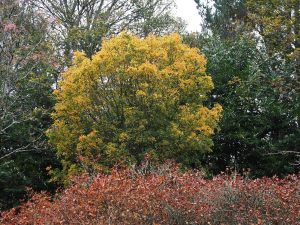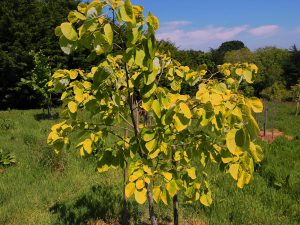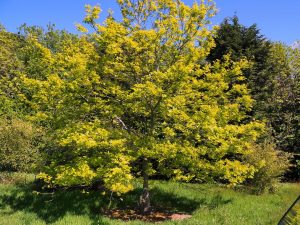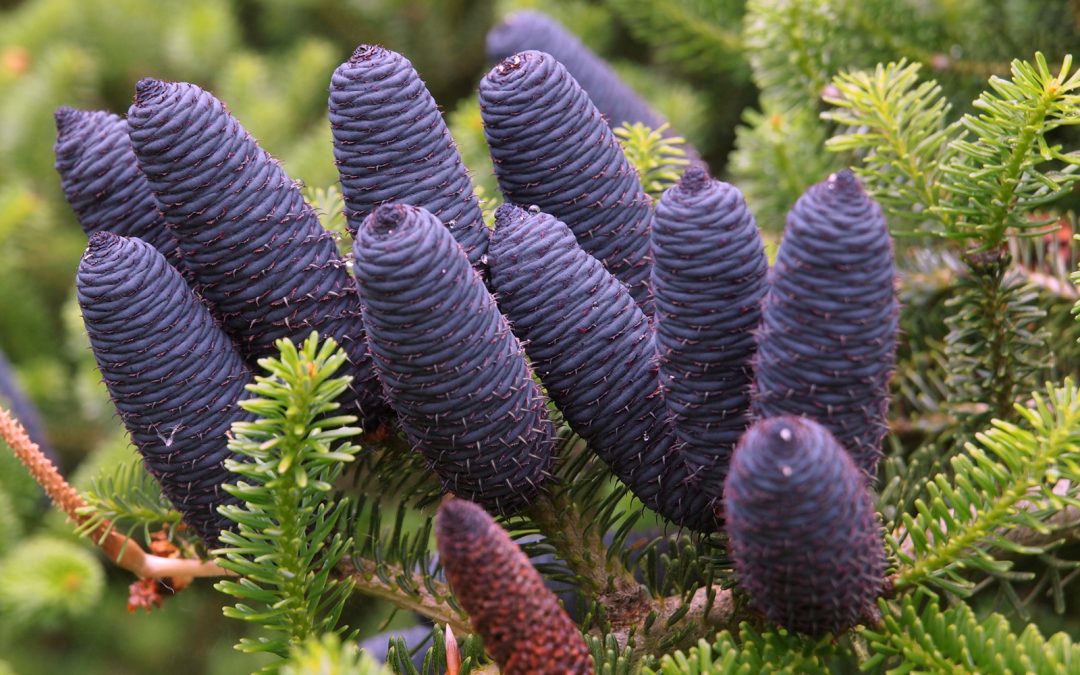Tony Kirkham, the former Head of Arboretum, Gardens & Horticulture Services at the Royal Botanic Gardens, Kew, delivered an interesting webinar to the International Dendrology Society in March 2022 listing out his thoughts on the parkland, landscape or forestry trees which should now be more widely grown. Some were quite common species, and already widely grown in UK woodlands and by foresters. Others were much rarer and more unusual in the UK landscape and only currently found in a few woodland gardens or park collections. Tony’s theme was that his selected trees were resilient to drought and drier warmer weather conditions and had, so far, not been subjected to disease issues either in their native environments or in the UK.
This set us thinking at Caerhays and Burncoose and we have added our own thoughts and suggestions to Tony’s original list as attached. Our additions all grow and thrive in our two woodland gardens.

Acer campestre

Tilia oliveri

Quercus palustris
Our intention at Burncoose is to increase our own production of the species listed, where possible, from seed or seedlings so that the nursery can, over the next few years, begin to offer reasonably priced small or whip sized plants in reasonable numbers to those planting these recommended trees in woodland gardens, parks or paddocks.
Mixed plantings of different rarer species is one key way of going forward as part of the government’s drive to plant more trees. Incorporating a few rarer hardwood species in or on the edge of smaller woodland plantings may well improve the diversity of the landscape using only species that can survive in a warmer climate.

